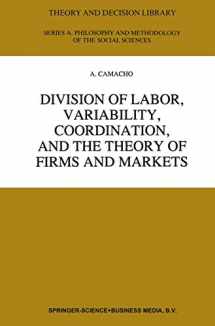
Division of Labor, Variability, Coordination, and the Theory of Firms and Markets (Theory and Decision Library A:, 22)
Book details
Summary
Description
A new approach to explaining the existence of firms and markets, focusing on variability and coordination. It stands in contrast to the emphasis on transaction costs, and on monitoring and incentive structures, which are prominent in most of the modern literature in this field. This approach, called the variability approach, allows us to: show why both the need for communication and the coordination costs increase when the division of labor increases; explain why, while the firm relies on direction, the market does not; rigorously formulate the optimum divisionalization problem; better understand the relationship between technology and organization; show why the `size' of the firm is limited; and to refine the analysis of whether the existence of a sharable input, or the presence of an external effect leads to the emergence of a firm.
The book provides a wealth of insights for students and professionals in economics, business, law and organization.


We would LOVE it if you could help us and other readers by reviewing the book
Book review



